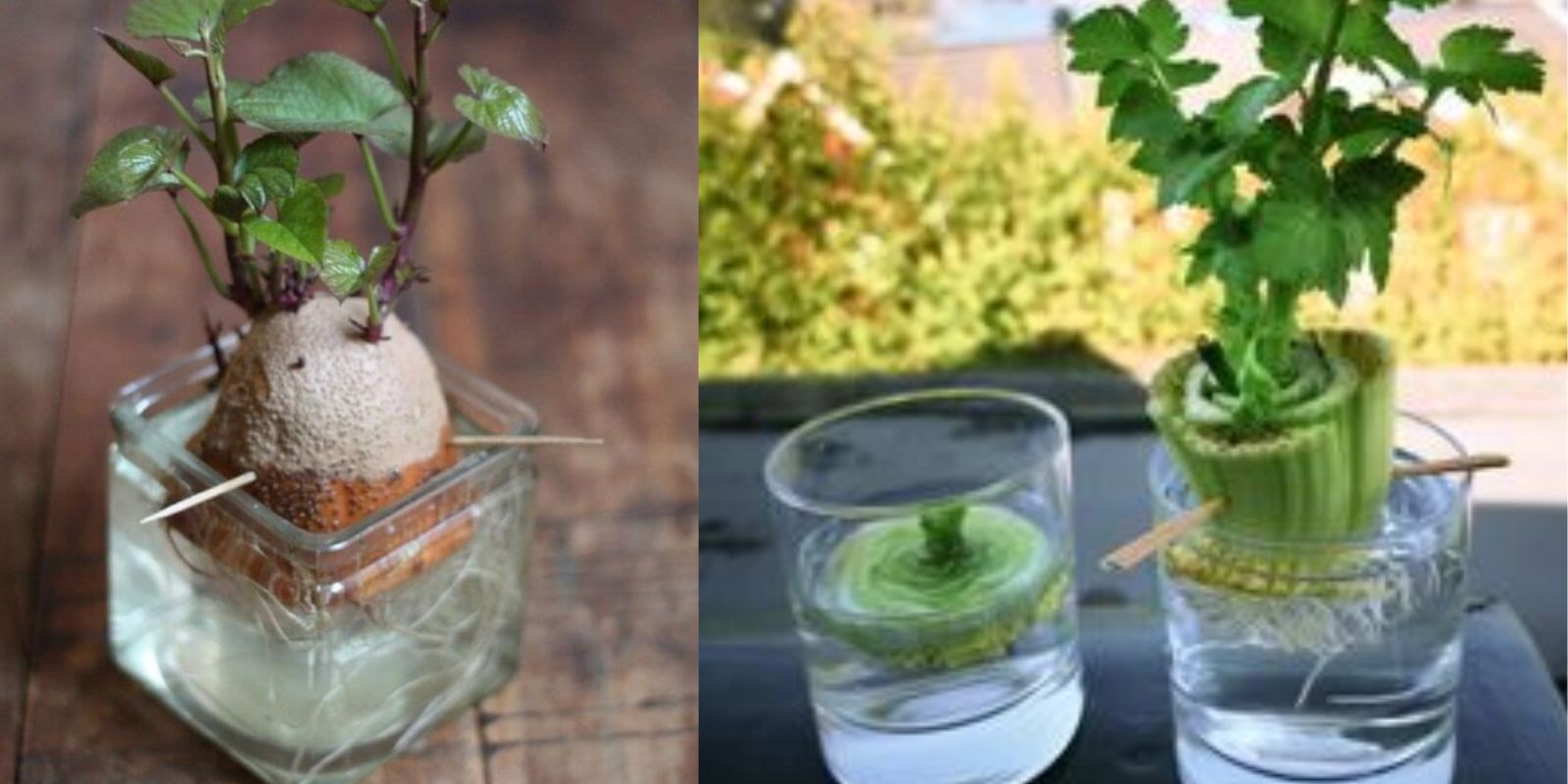Introduction
Gardening has surged in popularity as more people look for sustainable and economical ways to source their food. One fascinating and eco-friendly practice is regrowing food from kitchen scraps, specifically from the tops of vegetables and fruits. This method not only reduces waste but also provides a continuous supply of fresh produce. This article explores eight edible foods that can regrow from their tops, detailing the steps for each and the benefits of incorporating this practice into your gardening routine.
The Benefits of Regrowing Food from Scraps
Regrowing food from scraps offers numerous advantages:
- Sustainability: Reduces food waste and the environmental impact of transportation and packaging.
- Economical: Saves money on groceries by providing a free source of fresh produce.
- Educational: Teaches children and adults alike about plant biology and the importance of sustainable practices.
- Convenience: Provides a readily available supply of fresh herbs and vegetables for cooking.
Eight Edible Foods That Can Regrow From Their Tops
1. Carrots
Carrot tops can be regrown to produce new greens, which can be used in salads, soups, or as a garnish.
- Step-by-Step:
- Cut off the carrot tops, leaving about 1 inch of the root.
- Place the tops in a shallow dish with water.
- Keep the dish in a sunny spot.
- Change the water every few days to prevent mold.
- New greens will start to grow in a few days.
- Uses: Carrot greens are nutritious and can be used similarly to parsley.
2. Celery
Celery is easy to regrow from its base, providing a fresh supply for your kitchen.
- Step-by-Step:
- Cut off the base of the celery stalk, leaving about 2 inches.
- Place the base in a bowl with a bit of water.
- Put the bowl in a sunny window.
- Change the water every few days.
- New leaves will sprout from the center within a week.
- Uses: Use the new celery stalks and leaves in soups, salads, or as a crunchy snack.
3. Romaine Lettuce
Romaine lettuce can quickly regrow from its base, ensuring you have a steady supply of fresh leaves.
- Step-by-Step:
- Save the bottom 2 inches of the lettuce head.
- Place it in a dish with water.
- Put the dish in a sunny spot.
- Change the water every few days.
- New leaves will start to grow within a week.
- Uses: Harvest the new leaves for salads or sandwich toppings.
4. Green Onions
Green onions are one of the easiest vegetables to regrow, making them perfect for beginners.
- Step-by-Step:
- Place the white roots of the green onions in a glass of water.
- Keep the glass in a sunny location.
- Change the water every few days.
- New green shoots will regrow quickly.
- Uses: Use the regrown green onions in salads, soups, or as a garnish.
5. Bok Choy
Bok choy can be regrown from its base, providing a fresh supply of this nutritious green.
- Step-by-Step:
- Cut off the base of the bok choy, leaving about 2 inches.
- Place the base in a bowl of water.
- Leave the bowl in a sunny spot.
- Change the water every few days.
- New leaves will begin to grow from the center.
- Uses: Use the new leaves in stir-fries, soups, or as a side dish.
6. Pineapple
Pineapples take longer to regrow, but the process is rewarding and can eventually yield a new fruit.
- Step-by-Step:
- Cut off the leafy top of the pineapple and remove the lower leaves.
- Let the top dry for a day or two.
- Plant it in soil, leaving the leafy part exposed.
- Water it regularly and keep it in a sunny spot.
- New roots will develop, and the plant will grow.
- Uses: While it may take a couple of years, the plant can produce a new pineapple fruit.
7. Beets
Beet tops can be regrown to produce new greens, which are edible and nutritious.
- Step-by-Step:
- Cut off the top part of the beet with the greens, leaving about an inch of the root.
- Place it in a dish with water.
- Keep the dish in a sunny spot.
- Change the water every few days.
- New greens will start to grow.
- Uses: Beet greens can be used in salads, soups, or sautéed as a side dish.
8. Fennel
Fennel can be regrown from its base, providing fresh herbs for your culinary needs.
- Step-by-Step:
- Cut off the base of the fennel bulb, leaving about 2 inches.
- Place the base in a shallow dish with water.
- Keep the dish in a sunny spot.
- Change the water every few days.
- New shoots will begin to emerge.
- Uses: Use the regrown fennel fronds as a garnish or in salads and recipes that call for fennel.
Motivation to Get Started
Regrowing food from scraps is not only a sustainable practice but also a fun and educational project for the whole family. It teaches the principles of recycling, gardening, and sustainability, all while providing fresh and healthy produce for your kitchen. By following these simple steps, you can turn kitchen waste into valuable food resources, contributing to a greener and more self-sufficient lifestyle.
Conclusion
Regrowing edible foods from their tops is a practical and enjoyable way to make the most out of your kitchen scraps. With minimal effort, you can have a continuous supply of fresh vegetables and herbs, reducing your grocery bill and environmental impact. Start with these eight foods, and you’ll be amazed at how easy and rewarding this process can be. Share your regrowth success stories and tips with fellow gardeners to inspire others to adopt this sustainable practice. Happy gardening! 🌱✨

